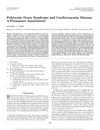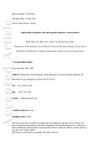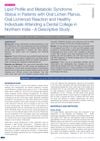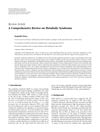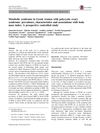Association Between Androgenetic Alopecia and Dyslipidemia in Male Patients: Evidence From a Hospital-Based Study
October 2023
in “
Pakistan Journal of Medical & Health Sciences
”
TLDR Men with hair loss often have abnormal cholesterol levels, so early screening is advised.
This study investigated the association between androgenetic alopecia (AGA) and dyslipidemia in 130 male patients aged 20-50 years. The results showed that 63.1% of the participants had dyslipidemia, with specific lipid abnormalities including elevated total cholesterol (30%), high LDL-C (33.8%), hypertriglyceridemia (27.7%), and low HDL-C (40%). The frequency of dyslipidemia was significantly higher in patients with more severe alopecia. The study concludes that dyslipidemia is highly prevalent in men with AGA, suggesting the need for early lipid profile screening to identify individuals at risk for cardiovascular disease.


